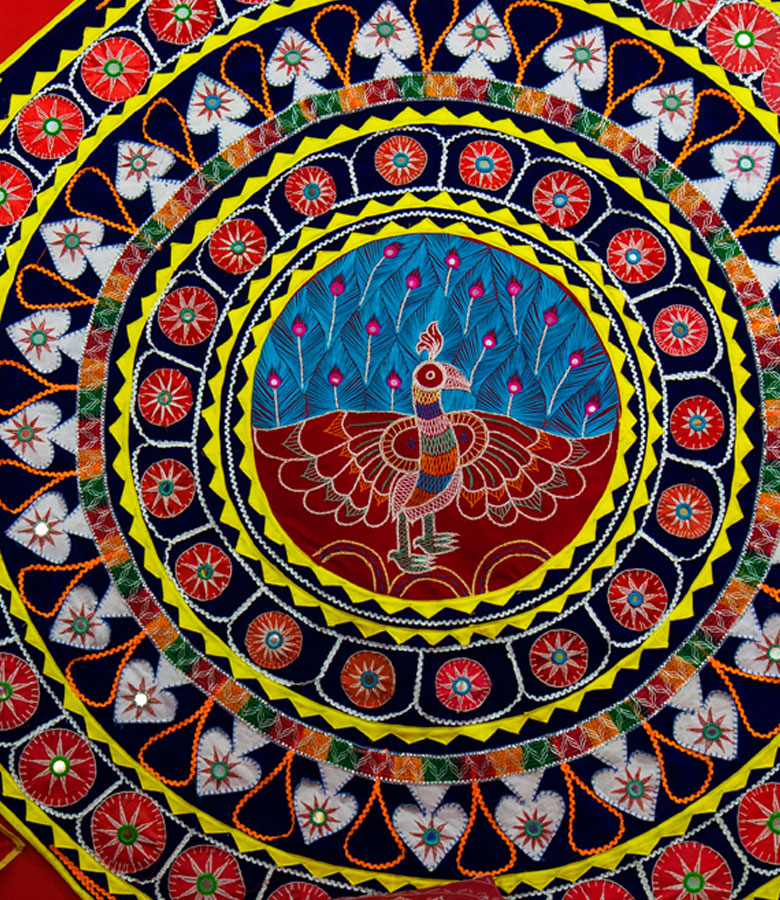Welcome to puri handicraft
Where Craft Meets Culture
Rooted in Culture, Made by Hand
The term appliqué is derived from French and Latin words appliquer and applicare, respectively, which both mean to join or attach. Like embroidery, it has a humble beginning. The technique was used as a way to strengthen worn areas of items or to patch holes that had formed. Early appliqué was used to length the life of clothing and moved into artful techniques that can be seen in blankets and quilts from numerous cultures from all over the world. In Pipli ‘Chandua” art dates backto many generations of the people on Pipli. The people there, are taught to hone Chandua art from their childhood.
The intricacy of the handicraft, practiced by a specific caste of professional tailors, known as ‘Darjis’, is unparalleled. The technique of creating appliqué is basically cutting up various coloured fabrics which are then sewn on to the surface of another foundation fabric. To accentuate the look, beautiful needlework, sequins and mirrors are added to the design. The stitching varies from one item to another, but is categorised under six styles‘Bakhia’, ‘Taropa’, ‘Ganthi’, ‘Chikana’, Button Hole and ‘Ruching’.The cloth patches are simple and motifs mostly revolve around gods, animals, birds, flowers and plants. The village is home to around 150 craftsmen and there are 500 girls who are involved in needle work, besides the shopkeepers and salesmen who procure the products. Though earlier the art form was restricted to Darji caste, today it is practiced by non-caste members, notably a group of Muslims in the village.
Pipli is used to adorn the chariots of Lord Jagannath and his siblings during the annual Ratha Yatra. It is also used in other rituals associated with the Lord. Pipili was set up as an artisan’s village during the Somavamsi dynasty rule in Odisha somewhere in the 10th Century AD. The art exemplifies the perfect syncretisation of the culture of Odisha. The applique work are predominantly created by Muslim artisans and adorned by the Lord of Odisha. The applique work comes in many variants right from wall hangings to lanterns to umbrellas to bag’s, pouches , bedspreads and are perfect souvenir’s to relive the memories of Odisha.Pipli, the village of applique craftsmen, derives its name from Pirs, the Muslim saint who lived in the region.
The king of Odisha established the village to accommodate the craftsmen who made applique craft for the annual Jagannath Rath Yatra procession. Both Hindus and Muslims of the village are involved in the making and trading of applique craft. The craft that originated as a temple art now finds its space in a wide range of decorative and ceremonial products. Almost all the villagers depend on the craft for their livelihood, the tourism industry working in their favour. “Wide scale use of shamiana are seen in the various festival of Lord Jagannath. Since the Lord’s rituals are more of the nature of the daily routine of human being, fan, umbrella of applique work are in rampant use to save the deity from the scorching heat of Sun or the rough weather.
In chandan yatra the entire procession is taken out displaying and covering the deities with chattris of applique work. Further, the chandua another marvel of applique work has become a household commodity in almost every riligious work. Besides used in the religious function, with the touch of a little modernity, garments of varied designs are also made with it. Ladies item like frock, blouse, purse, handbags etc. are in great demand among tourists. Screens of bigger size with applique touch are also been made depicting the different charecters of religious myth for interior design or decoration of houses.

Your Handcrafted Journey Begins Here